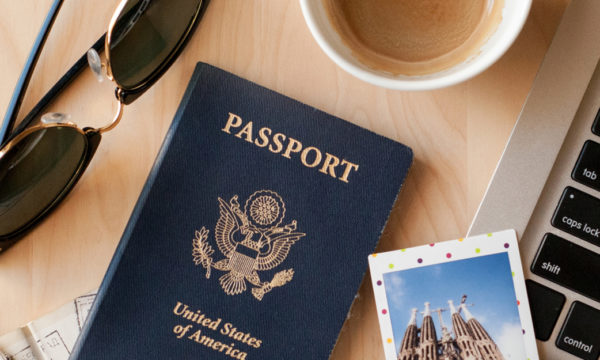
Shop This Look
How to Remove 5 Common Stains Like an Expert
Red wine on your trousers? Stuffing on your shirt? Don’t panic—read this.
In my family, Thanksgiving is the only holiday that always involves both dressy outfits and marathon-level eating. And for me, spills are inevitable—but they don’t have to spell doom for my favorite festive pieces. To prepare for the holiday, I decided to brush up on my laundry game by chatting with M.M.’s knitwear designer, Annie, and her dad, Dae, who owns the organic dry-cleaning company Coastal Cleaners.
“My dad has owned his dry-cleaning business for over 25 years, and he’s more hands-on than most,” says Annie. “As an extremely messy eater who just loves food, I personally have given him a lot of experience and challenges.” Annie says her dad is always sharing at-home cleaning tips to help her avoid dry cleaning (she’s even thought about starting a blog called “The Dry-Cleaner’s Daughter”)—but he also tells her when professional help is necessary to save a garment. “Some of my favorite clothes and vintage finds were salvaged and can be worn with pride thanks to him,” she says. “As someone who designs clothes, I couldn’t have been luckier.”
Here’s everything you need to know about stain removal, according to Annie and Dae.
The Cardinal Rule of Stain Removal
If you remember anything from this guide, let it be this: When it comes to removing stains, time is of the essence. It can be tempting to toss a stained garment into your hamper, forget about it, and hope for the best on laundry day—but the sooner you take action, the better chance you have of salvaging your piece. If you stain your clothing and don’t have time to spot treat it right away, lay the piece on your bed (or somewhere else you won’t be able to miss it) so you remember to do it before you go to sleep that night.

How to Treat Common Stains
Red Wine Stains
“You should bring anything stained with red wine to the dry cleaners, because they can get it out easily,” says Dae. While some red wine stains can be removed using at-home methods (and there are many, as a quick Google search will show), DIY techniques don’t always work. If you’re unsuccessful in removing red wine yourself, you could permanently stain your garment.
As we discussed, timing is everything—and Dae suggests bringing wine-stained garments to the dry cleaners within five days. “The longer you hold it at home, the harder it will be to take it out,” he explains. And if it’s a delicate item (think: silk or cashmere), the long, harsh process required to remove a stain that’s been sitting for a while could end up damaging the piece.
Coffee Stains
Annie and Dae agree that in most cases, coffee stains can be handled at home. “Let’s say you’re like me, and you spill coffee on yourself on your morning commute, which I’ve done many times,” says Annie. “I always follow my dad’s advice: When I get to the office, I gently blot the area with a dry cloth to remove excess coffee. When I get home that evening, I immediately soak the stain with a little bit of water and an equal-parts solution of dish soap and white vinegar for about 15 minutes (for small stains, use a q-tip). Finally, I rinse the area with cold or lukewarm water. This, in my experience, gets the coffee out right away, but if you wait too long and let it sit in your hamper, there’s a big chance this method won’t work. At that point, it’s time to bring your garment to the dry cleaners (or in my case, have my dad add it to my tab).”
Dae adds that Dawn dish soap works best for stain removal, but cautions against using too much of it. “The goal,” he says, “is not to have so much soap that it leaves suds on the garment.”

Tomato Sauce Stains
If you get tomato sauce on your clothes, follow the same steps you’d use to remove a coffee stain (outlined above)—and fast. “Tomato sauce is definitely something you don’t want to settle into your clothes,” says Dae. If the dish-soap-and-white-vinegar technique doesn’t do the trick, head to the dry cleaner (but even a dry cleaner won’t be able to help if you wait too long to address the stain).
Oil-Based Stains
The dish-soap-and-white-vinegar technique outlined above also works well for light-colored oils and salad dressings. For more heavy-duty stains (think: thick sauces, steak drippings), your best bet is to head to the dry cleaner as soon as you can.
Plant-Based Stains
According to Dae, plant-based stains, such as berries or grass stains, respond especially well to stain removers (The Laundress Stain Solution and Wash & Stain Bar are M.M.’s favorites). Apply the stain remover as soon as possible, then wash your garment as usual according to the care instructions.
Want more M Dash?
Sign up for our weekly newsletter.
Thank you!
How to Treat Mystery Stains
If you know what created a stain, make a note of it so you can tell your dry cleaner. “This will save a lot of time for the dry cleaner and also give you the best chance of getting back a perfectly intact, stain-free garment,” says Dae. Unfortunately, it’s not always obvious where a stain came from. “Most of the mysterious small stains I get are actually blood stains,” says Dae. “People often get small cuts and never even realize it. If you notice a small stain and you can’t remove it with water or the dish soap method, try ammonia. If it comes out, it was a blood stain.”

What to Do if You Don’t Catch a Stain Right Away
Small stains can be easy to miss at first—especially if you’re eager to get undressed and in bed after a large Thanksgiving dinner. If you haven’t inspected your garment for stains before putting it in the laundry, Annie recommends washing with cold water and being very selective about what you put in the dryer (in fact, we don’t recommend putting any M.M.LaFleur pieces in the dryer). “Once heat is applied to the garment,” she explains, “the stain is pretty much set, and there’s only a 50/50 chance your dry cleaner will be able to get it out.”
When to Go to the Dry Cleaner (and When Not to)
If you’re not able to remove a stain by spot treating at home, heading to the dry cleaner is often your best bet. However, Dae stresses that you should always read the care labels on your clothes. “You’d be surprised how many people don’t read the care label,” he says. “The misconception is that everything can be dry cleaned, but that’s just not the case. Take the time to understand and read the care label on your favorite clothes—this can save your clothes and your wallet.”
(Note: While these tips can be applied to many pieces, every garment is different and requires personalized care. If you’re not sure how to remove a stain, it’s always best to contact the company that made the piece for advice.)







